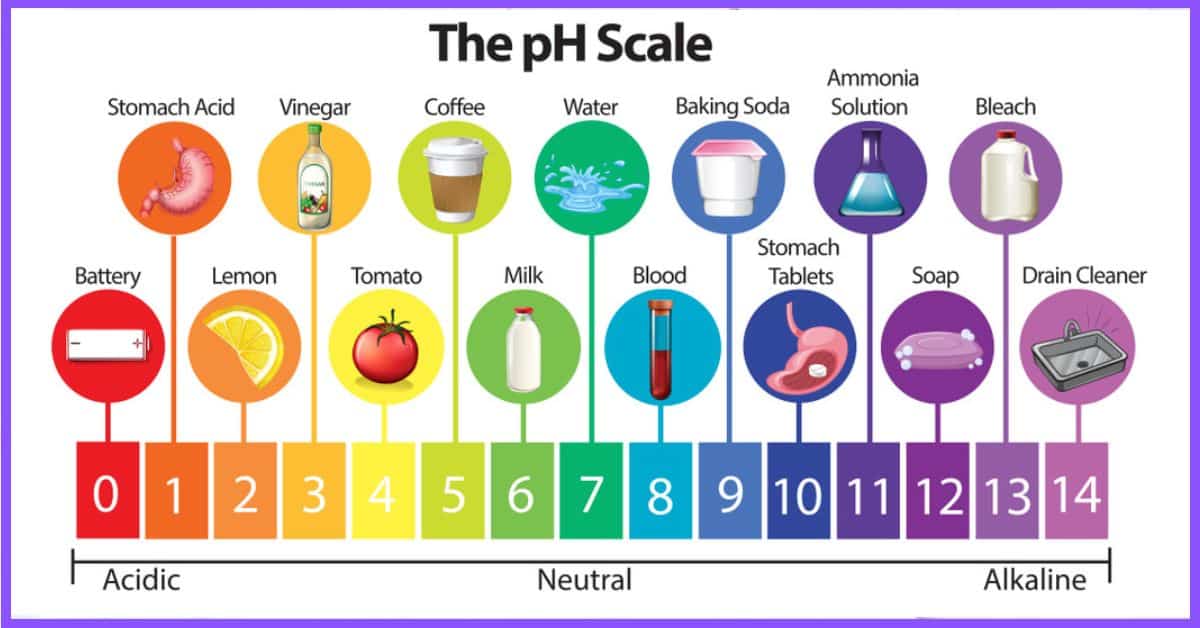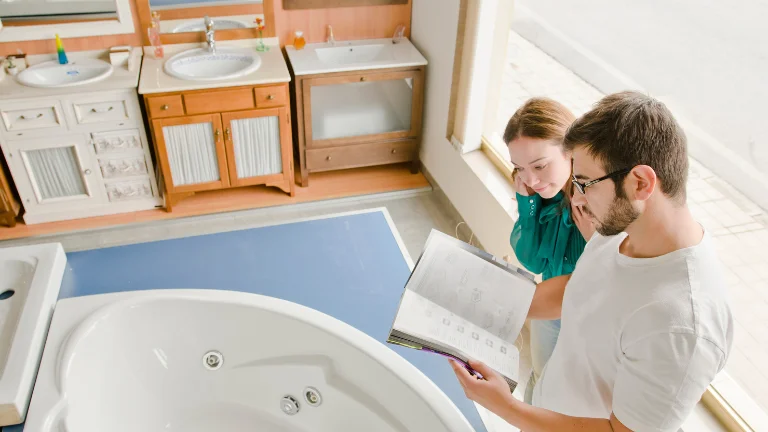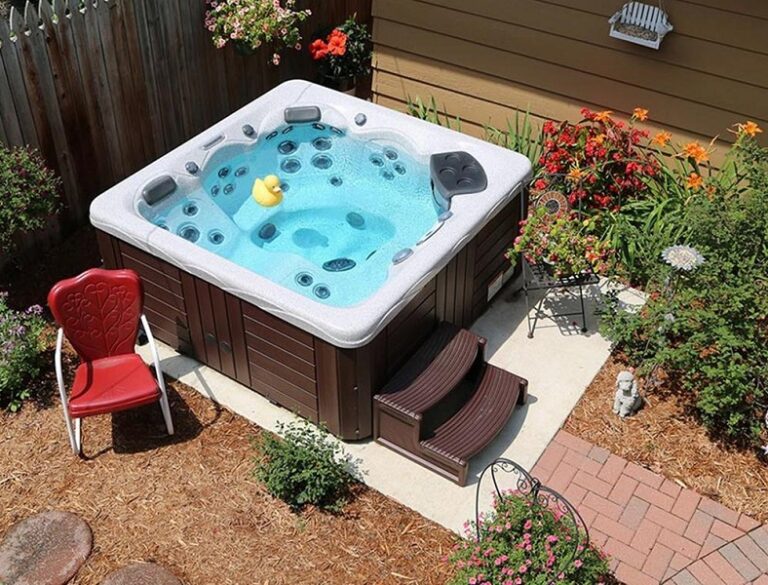Maintain Water Cleanliness in a Hot Tub: Easy Chemical-Free Water
It’s not complicated to maintain a clean and safe hot tub. Maintaining a regular maintenance schedule, balancing your water chemistry, and incorporating both chemical and natural sanitization methods will ensure your hot tub stays in good condition.
Every time you soak, this guarantees a relaxing, safe, and enjoyable experience. If you take care of your hot tub, it will give you years of worry-free relaxation.
Why Clean Water Matters
When it comes to maintaining a hot tub, clean water isn’t just a nice-to-have—it’s essential. Without proper care, the water can quickly become a breeding ground for bacteria and other contaminants, leading to all sorts of problems. Let’s break down why keeping your hot tub water clean is crucial.

Health & Safety
Nobody wants to dip into water that’s murky or full of germs. Dirty water can cause skin irritation, eye discomfort, and even trigger infections. Bacteria thrive in hot, warm environments, so without proper maintenance, your hot tub can become a haven for potentially harmful microorganisms.
Keeping the water clean and properly balanced helps prevent these risks, ensuring that every soak is as safe as it is relaxing.
Longevity
Your hot tub is an investment. Over time, neglected water can wreak havoc on the plumbing, filters, and the inner workings of your spa. Calcium buildup, for example, can clog the system, leading to costly repairs. Clean water reduces the wear and tear on your equipment, helping it last longer and function more efficiently.
Enjoyment
At the end of the day, a hot tub is meant to be an oasis—a place to unwind and destress. But it’s hard to enjoy that perfect soak when the water looks cloudy or feels uncomfortable.
Maintaining crystal-clear, balanced water enhances your experience, so you can relax without worrying about what might be lurking beneath the surface.
Establish a Consistent Maintenance Routine
Daily Tasks
- Cover the Hot Tub: Keep debris out by covering the tub when not in use.
- Run the Filtration System: Circulate water daily to maintain cleanliness.
Weekly Tasks
- Test pH and Alkalinity: Adjust levels to keep water balanced.
- Clean the Filter & Skim: Remove debris from the surface and rinse the filter.
- Use a Hot Tub Sponge: Remove oils and lotions from the water’s surface.
Monthly Tasks
- Deep Clean the Filter: Soak and rinse to remove buildup, replace if needed.
- Clean Jets and Plumbing: Check and clean for debris to maintain water flow.
Quarterly Tasks
- Drain & Refill: Replace old water to keep it fresh.
- Clean the Shell & Cover: Scrub for a spotless tub and cover.
Filter and Circulation Systems
By properly maintaining your filters and circulation system, you’ll ensure clean, balanced water and extend the lifespan of your hot tub.
Filter Maintenance
- Rinse Filters Weekly: Keep filters clean by rinsing them with water to remove debris.
- Soak in Filter Cleaner Monthly: For a deeper clean, soak the filters in a filter cleaner solution once a month to remove oils and buildup.
- Replace Filters Every 12–24 Months: Filters wear out over time. Replace them every 1–2 years to ensure optimal filtration.
Pump and Circulation
- Run the Pump Daily: Run the pump for at least 20 minutes each day to keep the water circulating and maintain cleanliness.
- Ensure Proper Water Flow: Check that the water flows freely through the system to prevent stagnation, which can lead to cloudy water or bacterial growth.
Chemical-Free Alternatives
By using these chemical-free solutions, you can maintain clean and safe water while eliminating the need for harsh chemicals.
1. Enzyme Products
- Break Down Oils and Organic Matter: Enzyme-based cleaners help break down oils, lotions, and organic debris that accumulate in the water.
- Reduce the Need for Harsh Chemicals: These products minimize the need for traditional chemicals, offering a more natural solution for clean water.
2. Silver Ion Cartridges
- Provide Natural Sanitization: Silver ions act as a natural sanitizer, preventing bacterial growth without chemicals.
- Extend Time Between Water Changes: By maintaining water quality, silver ion cartridges can help you go longer between water replacements.
3. Ozonators
- Use Ozone to Sanitize Water: Ozonators produce ozone, a powerful oxidizer that helps eliminate bacteria and contaminants.
- Reduce Chemical Usage: With ozone as a sanitizer, you can lower the amount of chemicals needed to keep the water clean.
Seasonal and Environmental Considerations
By preparing your hot tub for the changing seasons, you can ensure its longevity and performance throughout the year.
Winterizing
- Drain and Clean the Hot Tub: Before freezing temperatures hit, drain the water, clean the tub, and properly store the components to prevent damage from ice.
- Store the Cover and Accessories Properly: Remove and store the cover and any accessories in a dry, safe place to protect them from harsh winter conditions.
Summer Care
- Increase Filtration During High Usage: During the summer, with more frequent use, increase the filtration cycle to keep the water fresh and clear.
- Monitor Water Levels and Adjust Chemicals: Warmer weather and heavy use can cause chemical levels to fluctuate more quickly. Keep a close eye on the water levels and adjust chemicals as needed to maintain balance.
Troubleshooting Common Issues
Addressing these common issues promptly will keep your hot tub clean, comfortable, and enjoyable.
Cloudy Water
- Check and Adjust pH and Alkalinity: Imbalanced pH and alkalinity can cause cloudy water. Test and adjust these levels to restore clarity.
- Shock the Water and Clean the Filter: Use a non-chlorine shock to break down organic matter, then clean the filter to remove debris and improve water circulation.
Foamy Water
- Remove Oils with a Hot Tub Sponge: Body oils, lotions, and detergents can cause foam. Use a hot tub sponge to remove these residues from the water’s surface.
- Use Defoamer if Necessary: If foam persists, add a defoaming agent to reduce the foam and keep the water clear.
Unpleasant Odors
- Ensure Proper Sanitization: Foul smells often signal inadequate sanitation. Make sure the water is properly sanitized with chlorine, bromine, or a saltwater system.
- Clean the Cover and Shell Regularly: Dirt and bacteria can build up on the cover and shell, contributing to odors. Clean these surfaces to keep the water smelling fresh.
Budget-Friendly Maintenance Tips
Budget-friendly solutions can help you keep your hot tub in great shape by taking a proactive approach.
DIY Solutions
- Use Household Items for pH Adjustments: Baking soda is an affordable and effective way to raise pH levels, saving you money on specialized chemicals.
- Create a Siphon Vacuum for Debris Removal: You can make your own siphon vacuum to remove debris from the bottom of your hot tub, avoiding the need for expensive vacuum systems.
Regular Maintenance
- Consistent Care Prevents Costly Repairs: Regular maintenance may seem like a small investment, but it helps prevent bigger, more expensive issues down the line.
- Invest in Quality Filters and Chemicals: Quality filters and chemicals may have a higher upfront cost but are more effective and longer-lasting, saving you money in the long run.

Understanding Water Chemistry
pH Levels
The ideal pH level for hot tub water is between 7.2 and 7.8. This ensures the water is balanced—neither too acidic nor too alkaline. Maintaining the right pH protects both your skin and your hot tub equipment.
Alkalinity
Alkalinity should be kept between 80–120 ppm. Proper alkalinity stabilizes the pH and prevents fluctuations that can affect comfort and equipment longevity.
Sanitizer Levels
Use chlorine or bromine to maintain proper sanitizer levels. These keep your hot tub water free from bacteria, mold, and other pathogens, ensuring a safe, clean environment for your soaks.
Regular testing and adjusting of these key elements will help keep your hot tub water in perfect balance. For a complete guide, check out our guide on mastering hot tub water chemistry.

See discussed in our article on How Long Do Hot Tubs Last.
The Impact of Diligent Maintenance: Insights from Statistics and Expert Sources
A National Spa and Pool Institute (NSPI) study indicates that hot tubs with well-maintained water can last up to 50% longer than those without regular care. This is particularly relevant for popular brands like Jacuzzi and Sundance Spas, known for their longevity.
Furthermore, as the Centers for Disease Control and Prevention (CDC) reported, maintaining appropriate sanitizer levels in hot tubs can reduce the risk of recreational water illnesses by as much as 60%.
These statistics highlight the critical role of routine water testing and the use of quality products in ensuring a safe and enjoyable hot tub experience.
Choosing the Right Products and Accessories
Selecting the right products and accessories is like choosing the perfect outfit for an occasion. Brands like Jacuzzi, Sundance Spas, Hot Spring Spas, Marquis Spas, and Bullfrog Spas offer a range of quality products tailored for hot tub maintenance.
From pH balancers to algae preventers, ensure you use products specifically designed for hot tubs. Additionally, consider accessories like covers to keep debris out and steps or handrails for safety. For more inspiration, explore options in our Backyard Hot Tubs guide.
Addressing Common Water Issues
Even with regular maintenance, common water issues like cloudiness, foam, or algae can occur. Cloudy water indicates a filtration problem or high calcium levels, while foam can result from cosmetic residues or low calcium hardness.
Algae, though less common, can be a nuisance and is usually a sign of inadequate sanitizer levels. To tackle bacteria like Pseudomonas aeruginosa, regular shock treatments and maintaining proper sanitizer levels are essential. Early detection is critical, as detailed in our article on Spotting Hot Tub Folliculitis.
Health Benefits and Enjoyment
Beyond the joy of soaking in warm, bubbling water, a well-maintained hot tub offers numerous health benefits. It can be a sanctuary for stress relief and muscle relaxation and even aid in sleep improvement.
The therapeutic effects are significantly enhanced in a clean and well-maintained environment. Check out our Relaxing in Your Hot Tub article for tips on maximizing relaxation and rejuvenation.












5 Comments